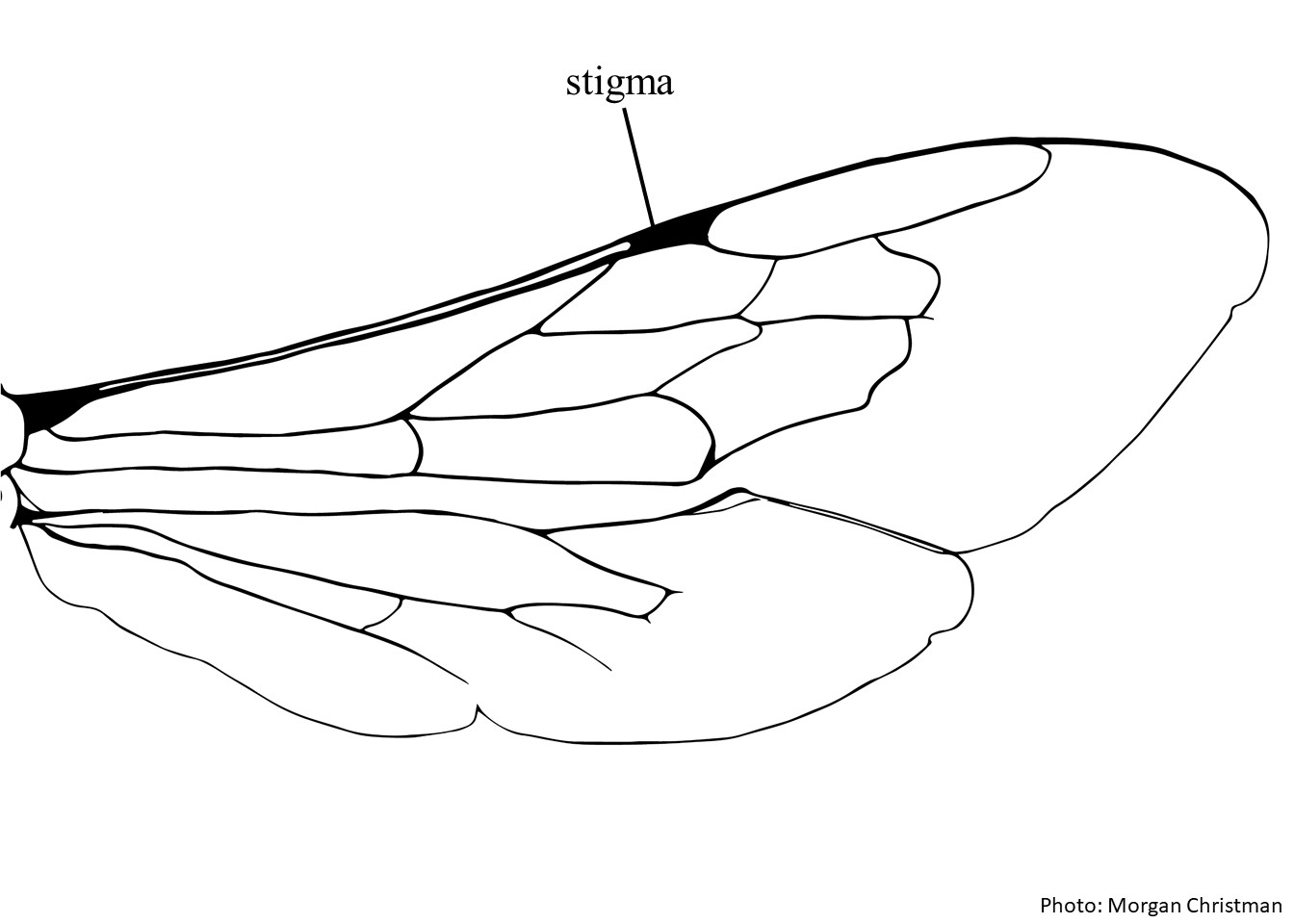Family: Megachilidae
Subfamily: Megachilinae
Tribe: Osmiini
Genus: Osmia Panzer, 1806
Subgenus: Trichinosmia Sinha, 1958
Common name: none
Osmia (Trichinosmia) are green metallic bees with long, branched mixed black and white hairs on the head and thorax. They range in body length from 9–10 mm (Michener 2007Michener 2007:
Michener, C.D. 2007. The Bees of the World (2nd ed.). Johns Hopkins University Press, Baltimore and London, 953 pp.).
(modified from Michener 2007Michener 2007:
Michener, C.D. 2007. The Bees of the World (2nd ed.). Johns Hopkins University Press, Baltimore and London, 953 pp.)
 .
. large and convexconvex:
large and convexconvex: at least medially.
at least medially.Osmia (Trichinosmia) can look similar to some species of O. (Melanosmia) but can be distinguished by abundant long, branched hairs on the head and thorax, and long hairs on their wings (Michener 2007Michener 2007:
Michener, C.D. 2007. The Bees of the World (2nd ed.). Johns Hopkins University Press, Baltimore and London, 953 pp.).
A study examining the pollen provisions in nest cells of O. latisulcata suggests that this species is oligolecticoligolectic:
the term used to describe bees that specialize on a narrow range of pollen sources, generally a specific plant genus
on Astragalus (Parker 1984Parker 1984:
Parker, F.D. 1984. Nesting biology of Osmia (Trichinosmia) latisulcata Michener. Journal of the Kansas Entomological Society 57: 430ndash;436.).
In a study on Osmia (Trichinosmia), Parker (1984) observed O. latisulcata nesting in drilled holes in wood blocks. The cell partitions were constructed out of pebbles and masticated leaf pulp. This suggests that Osmia (Trichinosmia) nests in cavities; however, the types of cavities they use for nesting in nature is currently unknown.
Osmia (Trichinosmia) is monotypic with only one described species, O. latisulcata (Michener 2007Michener 2007:
Michener, C.D. 2007. The Bees of the World (2nd ed.). Johns Hopkins University Press, Baltimore and London, 953 pp.).
Osmia (Trichinosmia) occur in desert or semi-desert areas in southwestern U.S. (Michener 2007Michener 2007:
Michener, C.D. 2007. The Bees of the World (2nd ed.). Johns Hopkins University Press, Baltimore and London, 953 pp.).
Distribution map generated by Discover Life -- click on map for details, credits, and terms of use.
Michener, C.D. 2007. The Bees of the World (2nd ed.). Johns Hopkins University Press, Baltimore and London, 953 pp.
Parker, F.D. 1984. Nesting biology of Osmia (Trichinosmia) latisulcata Michener. Journal of the Kansas Entomological Society 57: 430-436.